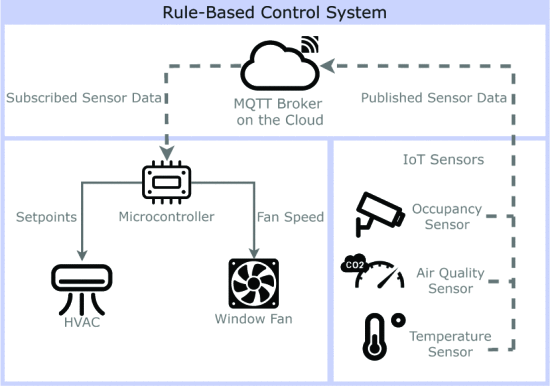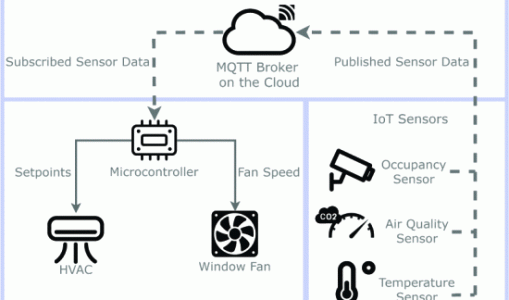IoT-Based Multi-Speed HVAC Control: Simulation Results and Testbed Development
Maintaining thermal comfort and indoor air quality while minimizing energy consumption is a key challenge in smart building management. Traditional on–off or simple hysteresis HVAC controllers often fail to adapt to dynamic indoor environments, leading to energy inefficiencies and occupant discomfort.

This study presents an IoT-enabled, multi-speed rule-based HVAC controller designed to improve climate control by dynamically adjusting ventilation fan speeds according to real-time temperature and CO₂ data. The system architecture is modular, consisting of sensing, communication, control, and actuation layers, and is validated through both EnergyPlus–Sinergym simulations and the development of a real-world Raspberry Pi–based testbed.
The proposed controller is compared against conventional on–off and hysteresis controllers across hot, mixed, and cold climate scenarios. Results show that while all three strategies maintain comparable energy use, the multi-speed controller achieves more stable indoor temperature and CO₂ levels, thereby improving occupant comfort. In particular, the adaptive fan speed mechanism ensures finer-grained control: natural airflow for moderate CO₂ levels, medium speed when concentrations rise, and high-speed ventilation during poor air quality.
A fully functional testbed integrates temperature and BME680 air quality sensors, occupancy detection, energy monitoring with Shelly 3EM, and MQTT-based communication, enabling real-time feedback and control. This setup not only validates simulation findings but also provides a foundation for extending the system with Q-learning and deep reinforcement learning for adaptive, data-driven control.
By combining low-overhead rule-based control with IoT-enabled sensing and actuation, the proposed framework offers a practical, scalable, and energy-efficient solution for future smart building deployments. Future enhancements include integrating age-aware IoT communication protocols (A3L-FEC-FSFB, ACP/ACP+) for robust edge-based operation under constrained networks.

